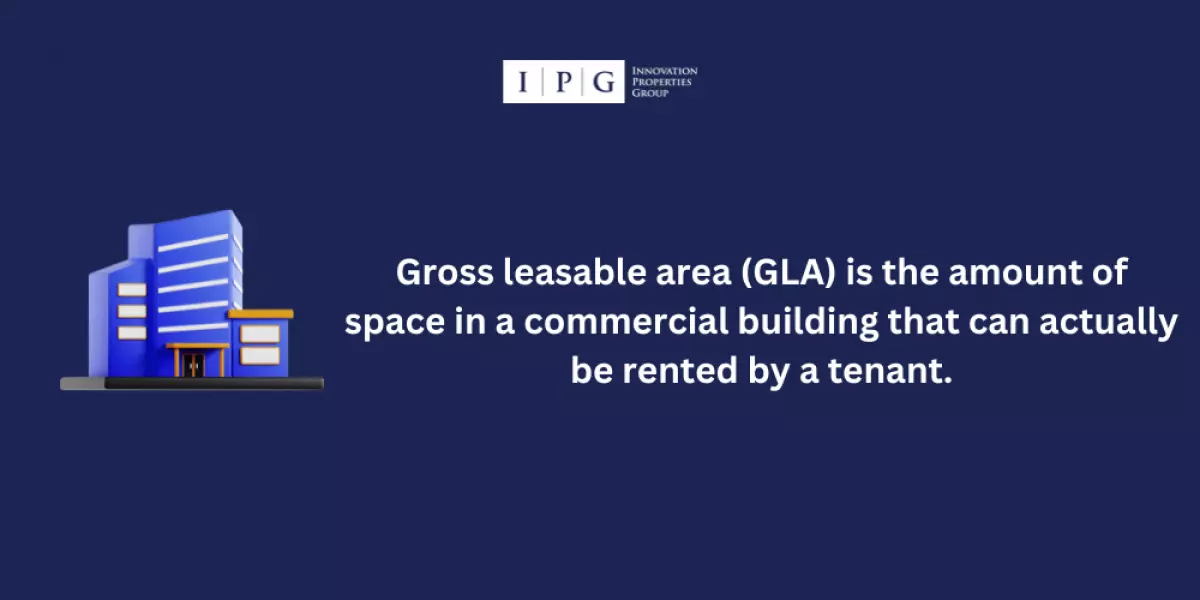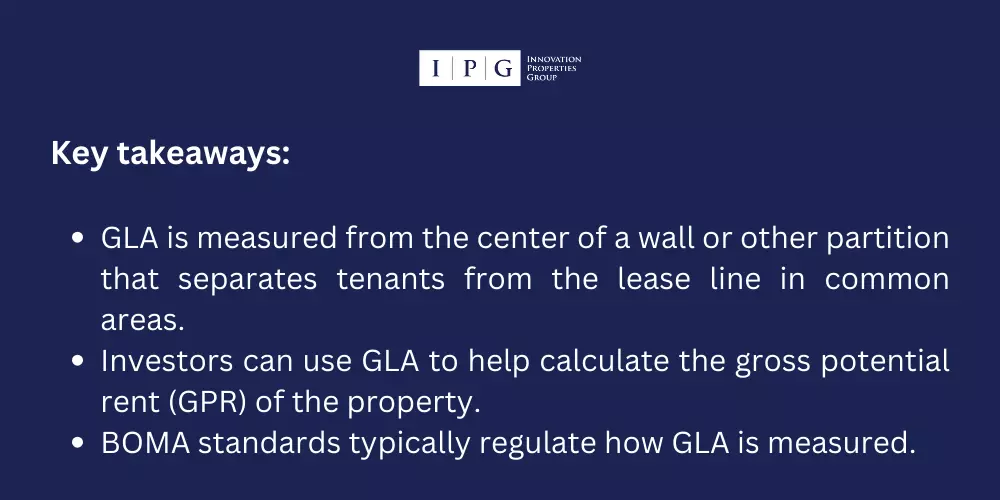Landlords charge rent based on the "gross leasable area" (GLA) of office buildings. However, GLA can sometimes cause confusion for tenants who mistakenly believe it refers to the measurements of their leased space. In reality, GLA includes all common areas of the building that tenants do not regularly occupy, such as elevators and bathrooms. The actual square footage of the tenant's space is called the "net rentable area" of the building.
Understanding GLA, or Gross Leasable Area
GLA, also known as gross leasable area, measures the total usable interior space in a real estate property. It comprises floors and areas used for tenant-oriented business activities or shopping. The focus is on the total usable floor space that generates rental income. Common areas like hallways and restrooms are typically included in GLA, although certain areas like elevator shafts and stairwells may be excluded depending on their usage.
GLA is crucial in assessing the commercial value of a property as it indicates the potential tenant rental income that can be generated for the owner.
Comparing GLA with Net Rentable Space
The gross leasable area of a tenant's space is almost always larger than its actual physical measurements. So, when you are planning to lease a 5,000 sq. ft. office space, it may turn out to be around 4,300 to 4,700 sq. ft., considering the amount of non-rentable space included in the estimates. It's essential to be aware of this difference when budgeting for your new office space.
Rent Based on Gross Leasable Area
In most cases, tenants have to pay rent based on the gross leasable area of the building. This has more to do with the pricing models that have developed over the years than with paying for a share of the common area. Landlords calculate their return on investment and set rents accordingly. Tenants paying rent based on net rentable area would lead to higher per square foot rents to meet the landlord's target return on investment.
Therefore, as a tenant, you will be paying rent based on the gross leasable area because you are responsible for a portion of the common area.
GLA and Gross Potential Rent
Understanding the relationship between GLA and gross potential rent (GPR) is crucial for investors. By calculating GPR using the GLA and market rent per square foot, investors can gain valuable insights into potential rental income. Occupancy rates can significantly impact the final rental income, so it's important to consider all factors before making investment decisions.
BOMA Standards - Measuring GLA
Measuring GLA according to Building Owners and Managers Association (BOMA) standards is vital for commercial and office property management. BOMA defines GLA as any individual rooms or portions of a room that can be leased or used to generate income. This includes common areas like lobbies and hallways, along with tenant spaces. Proper measurement through BOMA standards ensures tenants have an accurate impression of the property value they will receive for their lease agreement.
For any specific questions about how a part of a building may be included in its gross leasable area, consult IPG for more information. To learn more about commercial real estate leases, speak with an IPG specialist today.
 GLA definition - Image source: saigonintela.vn
GLA definition - Image source: saigonintela.vn
 GLA key takeaways - Image source: saigonintela.vn
GLA key takeaways - Image source: saigonintela.vn











